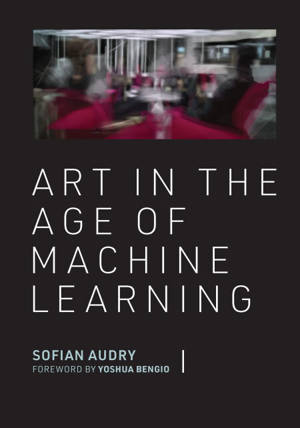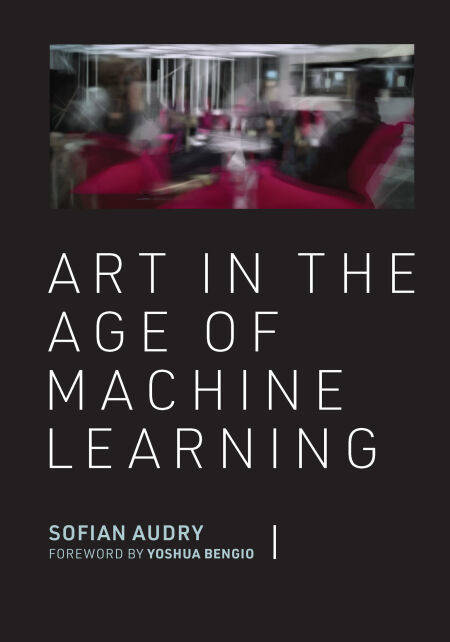
Je cadeautjes zeker op tijd in huis hebben voor de feestdagen? Kom langs in onze winkels en vind het perfecte geschenk!
- Afhalen na 1 uur in een winkel met voorraad
- Gratis thuislevering in België vanaf € 30
- Ruim aanbod met 7 miljoen producten
Je cadeautjes zeker op tijd in huis hebben voor de feestdagen? Kom langs in onze winkels en vind het perfecte geschenk!
- Afhalen na 1 uur in een winkel met voorraad
- Gratis thuislevering in België vanaf € 30
- Ruim aanbod met 7 miljoen producten
Zoeken
€ 44,35
+ 44 punten
Uitvoering
Omschrijving
Go inside the artistic movement that draws on machine learning as both inspiration—and medium—for creating new media art and music.
In this book, transdisciplinary artist-researcher Sofian Audry examines artistic practices at the intersection of machine learning and new media art, providing conceptual tools and historical perspectives for new media artists, musicians, composers, writers, curators, and theorists. Audry looks at works from a broad range of practices, including new media installation, robotic art, visual art, electronic music and sound, and electronic literature, connecting machine learning art to such earlier artistic practices as cybernetics art, artificial life art, and evolutionary art.
Machine learning underlies computational systems that are biologically inspired, statistically driven, agent-based networked entities that program themselves. Audry explains the fundamental design of machine learning algorithmic structures in terms accessible to the nonspecialist while framing these technologies within larger historical and conceptual spaces. Audry debunks myths about machine learning art, including the ideas that machine learning can create art without artists and that machine learning will soon bring about superhuman intelligence and creativity. Audry considers learning procedures, describing how artists hijack the training process by playing with evaluative functions; discusses trainable machines and models, explaining how different types of machine learning systems enable different kinds of artistic practices; and reviews the role of data in machine learning art, showing how artists use data as a raw material to steer learning systems and arguing that machine learning allows for novel forms of algorithmic remixes.
In this book, transdisciplinary artist-researcher Sofian Audry examines artistic practices at the intersection of machine learning and new media art, providing conceptual tools and historical perspectives for new media artists, musicians, composers, writers, curators, and theorists. Audry looks at works from a broad range of practices, including new media installation, robotic art, visual art, electronic music and sound, and electronic literature, connecting machine learning art to such earlier artistic practices as cybernetics art, artificial life art, and evolutionary art.
Machine learning underlies computational systems that are biologically inspired, statistically driven, agent-based networked entities that program themselves. Audry explains the fundamental design of machine learning algorithmic structures in terms accessible to the nonspecialist while framing these technologies within larger historical and conceptual spaces. Audry debunks myths about machine learning art, including the ideas that machine learning can create art without artists and that machine learning will soon bring about superhuman intelligence and creativity. Audry considers learning procedures, describing how artists hijack the training process by playing with evaluative functions; discusses trainable machines and models, explaining how different types of machine learning systems enable different kinds of artistic practices; and reviews the role of data in machine learning art, showing how artists use data as a raw material to steer learning systems and arguing that machine learning allows for novel forms of algorithmic remixes.
Specificaties
Betrokkenen
- Auteur(s):
- Uitgeverij:
Inhoud
- Aantal bladzijden:
- 214
- Taal:
- Engels
- Reeks:
Eigenschappen
- Productcode (EAN):
- 9780262367103
- Verschijningsdatum:
- 22/11/2021
- Uitvoering:
- E-book
- Beveiligd met:
- Adobe DRM
- Formaat:
- ePub

Alleen bij Standaard Boekhandel
+ 44 punten op je klantenkaart van Standaard Boekhandel
Beoordelingen
We publiceren alleen reviews die voldoen aan de voorwaarden voor reviews. Bekijk onze voorwaarden voor reviews.









